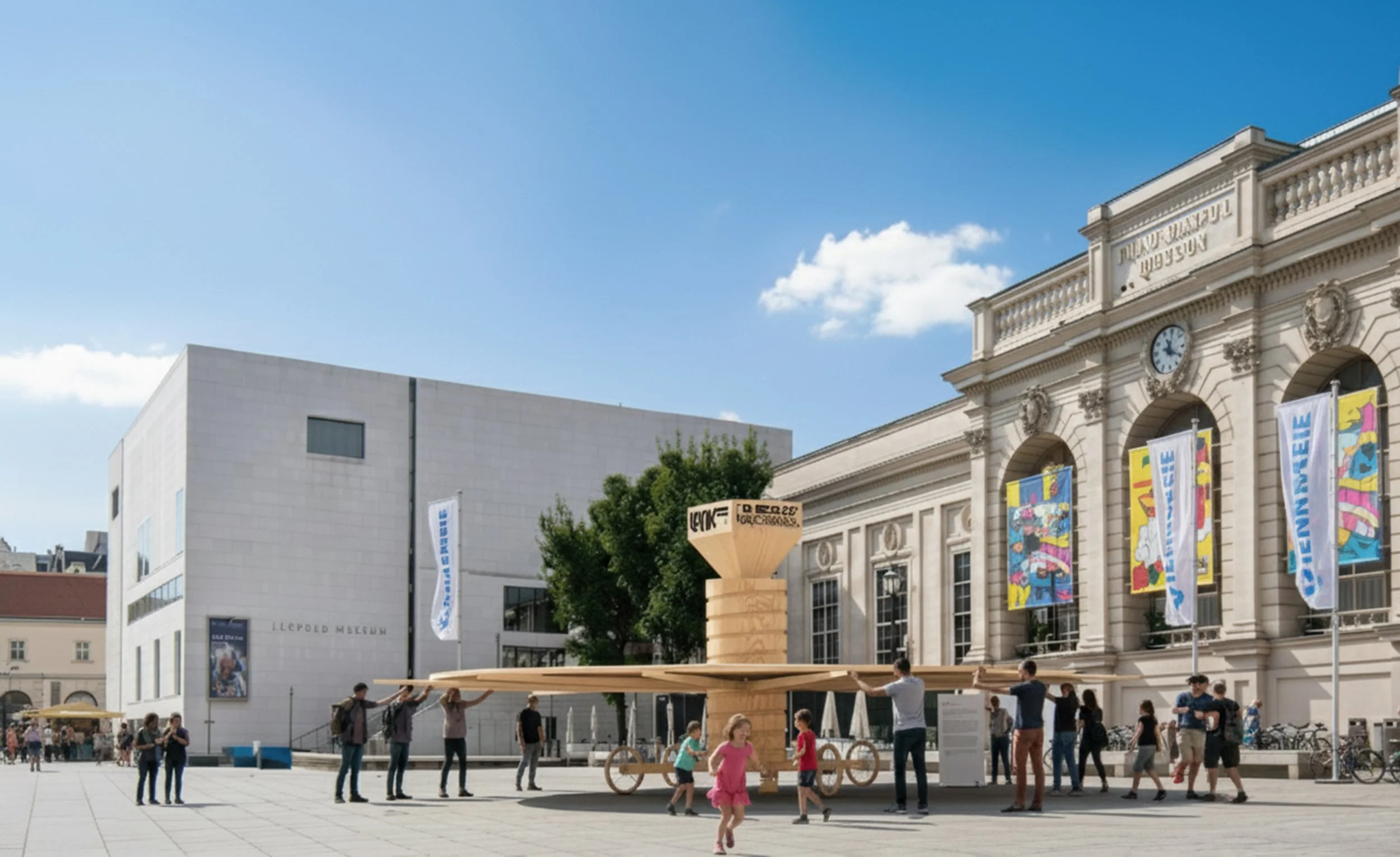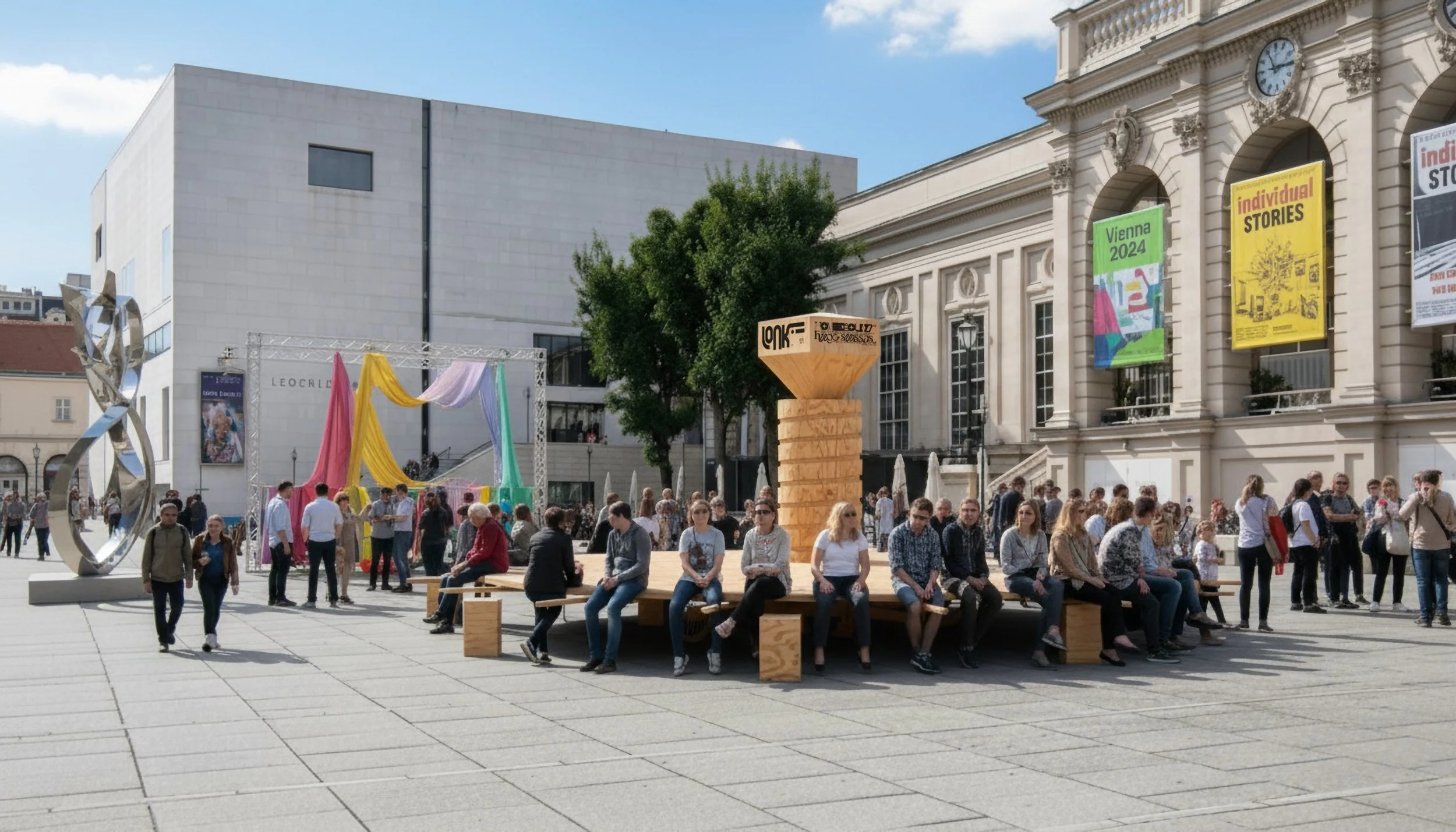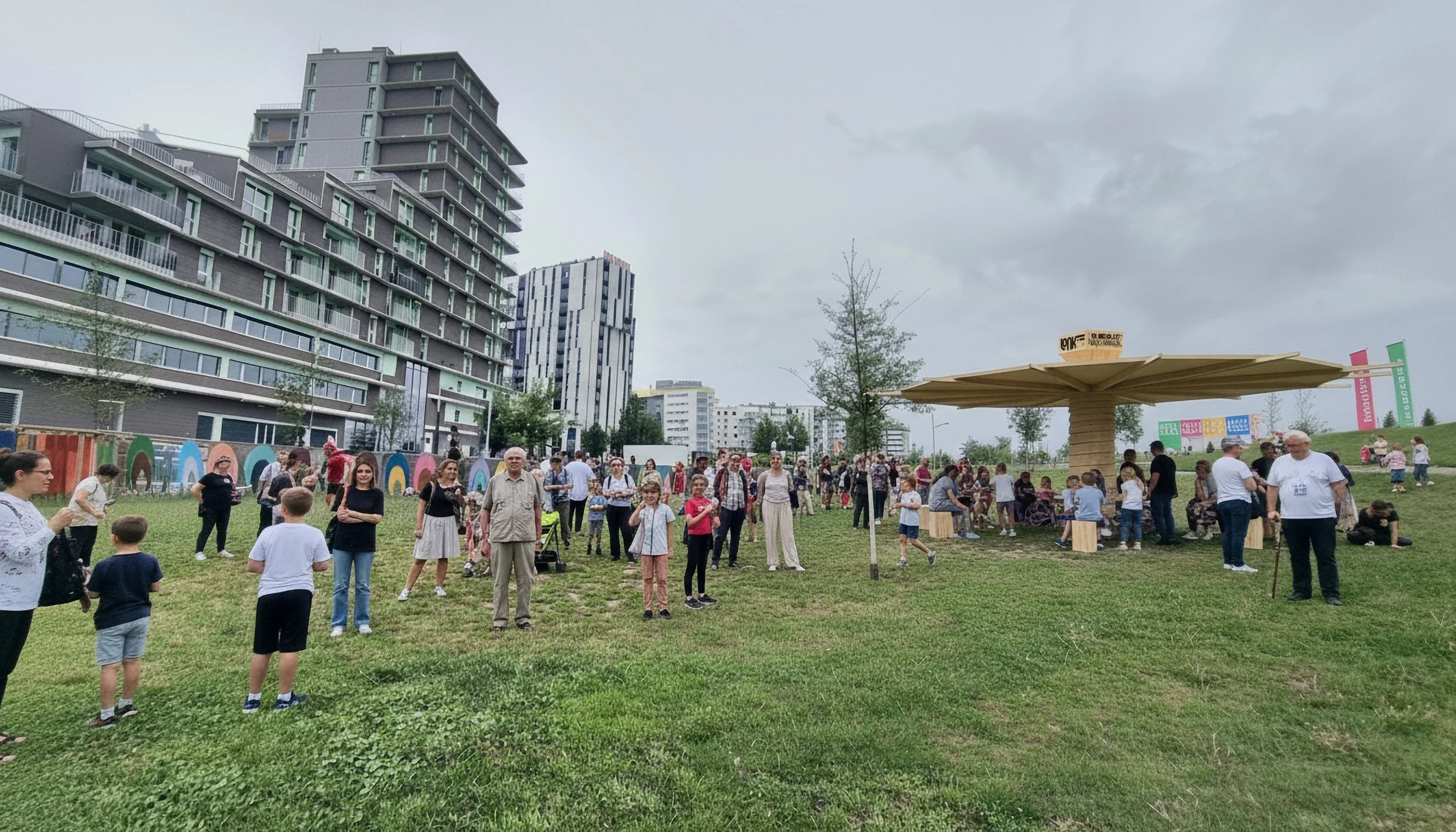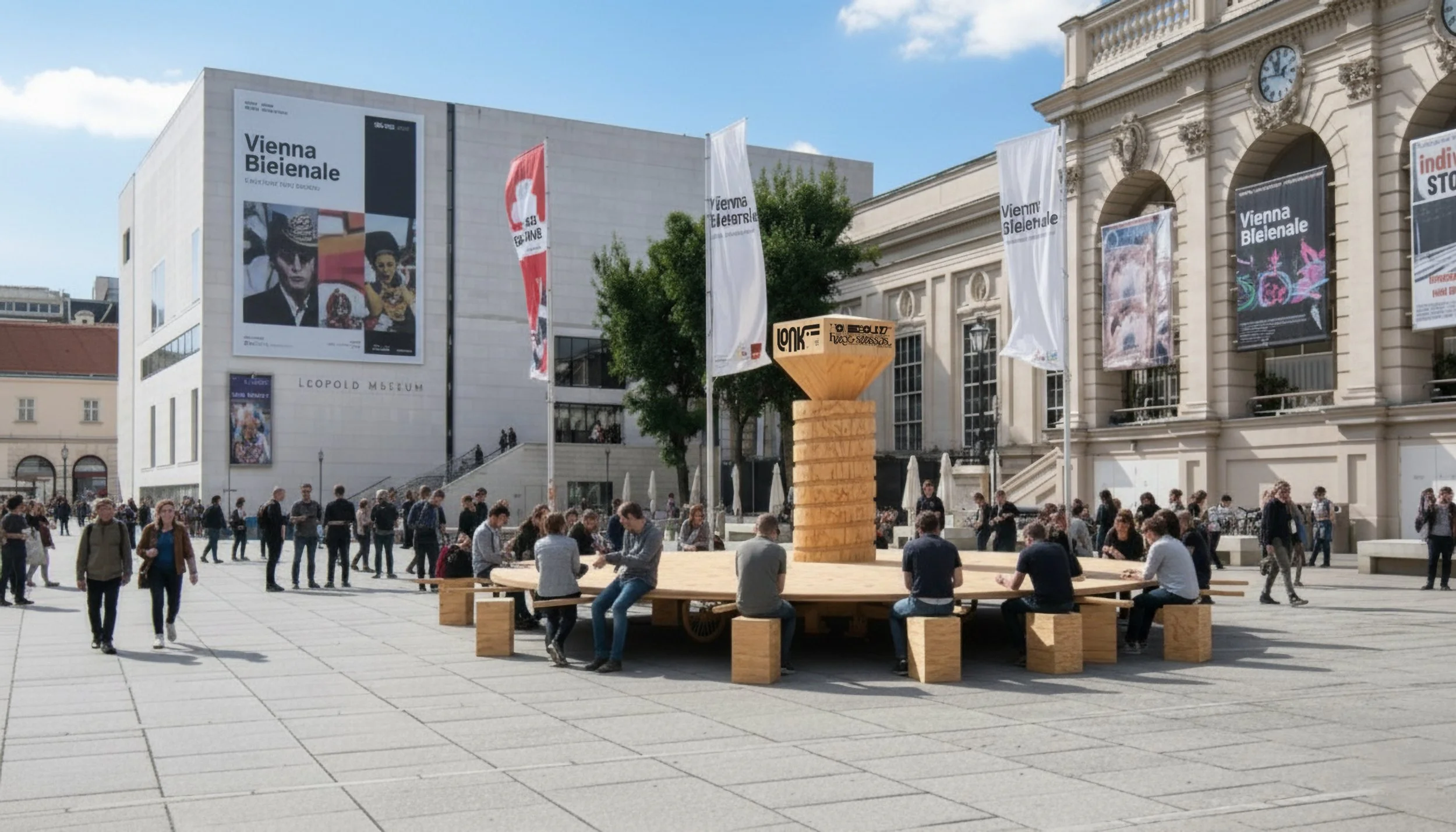
Ring a ring O’roses
A Proposal for Shaping Vienna’s Urban Open Spaces
The project is titled Ring a Ring O’ Roses, after the children’s game where participants hold hands and turn together in a circle.
Our central installation is a lightweight circular platform made of compressed, water-resistant paper. At its core stands a screw-like structure, with wooden handles extending from the surface. Visitors in the city are invited to collaborate: by turning the handles together, they can rotate the platform and adjust its height.
When the platform rests on the ground, it becomes a surface for sitting and gathering. Raised to a height of eighty centimeters, it transforms into a communal table—hosting food sharing, performances, or culinary events. Elevated to two meters, it acts as a canopy, providing shade and shelter.
What lies at the heart of the work is not only the object itself but the collective act of rotation—the choreography of participation that transforms public engagement into a performance in its own right.
The installation is designed in two versions—mobile and fixed—allowing it to travel and be repositioned during the Biennale’s hundred days. Its primary site is envisioned for the MuseumQuartier, though its mobility enables it to appear across multiple urban locations.
The installation consists of a circular wooden platform supported by a spiral-like central column. The platform can be adjusted to three levels:
Ground level (0 cm) → a resting and seating area for citizens.
80 cm → a table for food-sharing, painting, and food-related performances.
190 cm → an urban canopy or micro-stage for small performances.
The height adjustment is activated collectively, by rotating wooden handles extending from the platform—an action reminiscent of children holding hands and spinning in a circle. This shared motion generates energy, joy, and a sense of belonging.

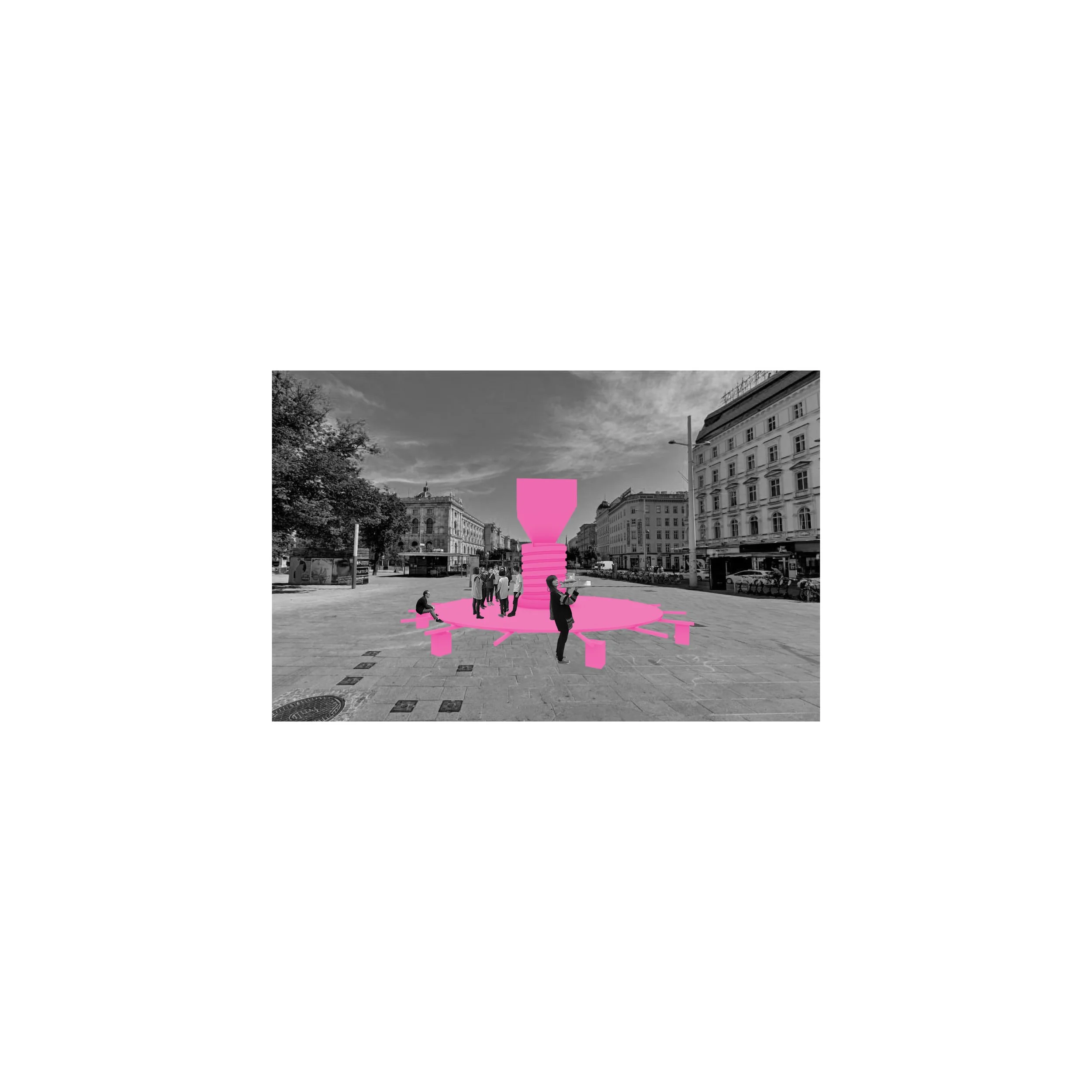
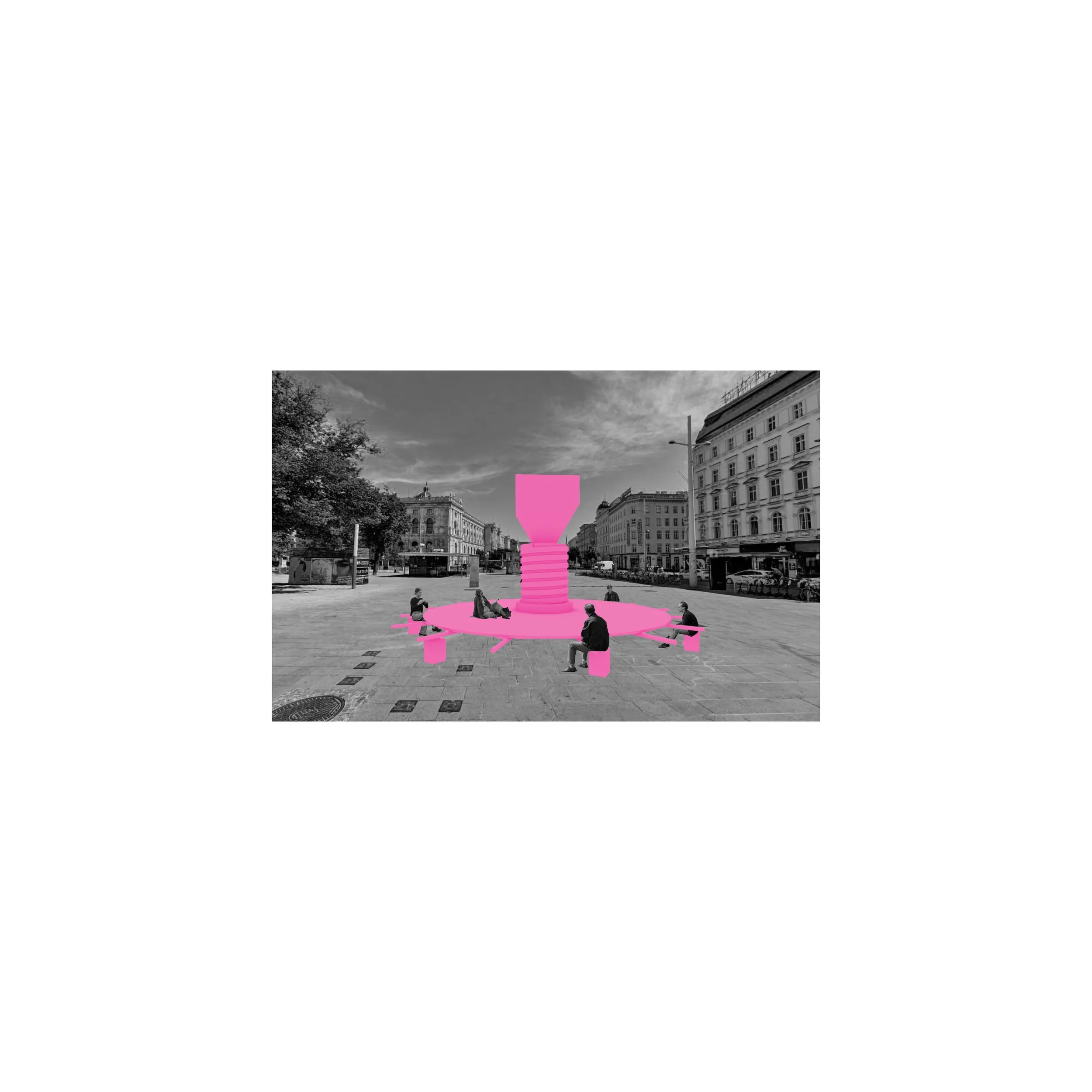
The installation exists in both fixed and mobile versions. While its main site is the MuseumQuartier, the mobile version allows it to travel and reappear in different parts of the city—such as Seestadt Aspern in Vienna’s 22nd district—bringing the collective act of participation into diverse urban contexts.

